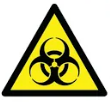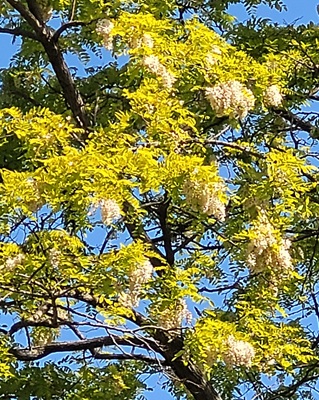Flower Properties
| Property | Value |
|---|---|
| English Name | Black Locust |
| MainColor | White |
| PlantType | |
| Growth Type | |
| Season | May |
| ImageUrl | Robinia-001 |
| Photographer | DP |
| Location | |
| Human Toxicity |
Flower Details
Description
A fast-growing deciduous tree with pinnate leaves, fragrant white pea-like flowers, and deeply furrowed bark. It produces strong, durable wood and has nitrogen-fixing roots, improving soil fertility.
Distribution
Native to North America. Widely planted as an ornamental or for timber and occasionally naturalised in southern parts of the UK.
Medicinal/Other Uses
The fragrant flowers are sometimes used in honey production. The wood is valued for fence posts and furniture due to its resistance to rot.
Edibility
Flowers are edible and sometimes used in fritters.
Human Toxicity

Bark, seeds, and leaves are highly toxic to humans and pets, causing vomiting, weakness, and depression if ingested.
Pet Toxicity

Highly toxic – ingestion can be dangerous or fatal to cats, dogs, and horses.
Active Compounds
Toxalbumins (robinin, phasin).
